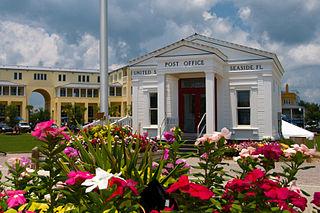
New Urbanism is an urban design movement which promotes environmentally friendly habits by creating walkable neighborhoods containing a wide range of housing and job types. It arose in the United States in the early 1980s, and has gradually influenced many aspects of real estate development, urban planning, and municipal land-use strategies. New urbanism attempts to address the ills associated with urban sprawl and post-Second World War suburban development.

The Globe and Mail is a Canadian newspaper printed in five cities in western and central Canada. With a weekly readership of 2,018,923 in 2015, it is Canada's most widely read newspaper on weekdays and Saturdays, although it falls slightly behind the Toronto Star in overall weekly circulation because the Star publishes a Sunday edition while the Globe does not. The Globe and Mail is regarded by some as Canada's "newspaper of record".
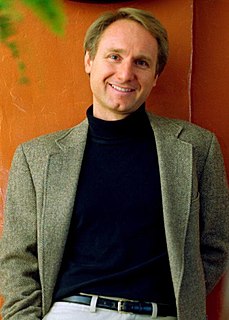
Daniel Gerhard Brown is an American author best known for his thriller novels, including the Robert Langdon novels Angels & Demons (2000), The Da Vinci Code (2003), The Lost Symbol (2009), Inferno (2013) and Origin (2017). His novels are treasure hunts that usually take place over a period of 24 hours. They feature recurring themes of cryptography, art, and conspiracy theories. His books have been translated into 57 languages and, as of 2012, have sold over 200 million copies. Three of them, Angels & Demons, The Da Vinci Code, and Inferno, have been adapted into films.

Urban sprawl, or suburban sprawl, is the unrestricted growth in many urban areas of housing, commercial development, and roads over large expanses of land, with little concern for urban planning. In addition to describing a particular form of urbanization, the term also relates to the social and environmental consequences associated with this development. Since the advent of the industrial era, sprawl has entailed no direct disadvantages, such as the loss of protection from medieval city walls. However, its disadvantages and costs include increased travel time, transport costs, pollution, and destruction of countryside. The cost of building the infrastructure needed for new developments is hardly ever recouped through property taxes, amounting to a huge subsidy for the developers and new residents at the expense of existing property taxpayers. In Continental Europe, the term peri-urbanisation is often used to denote similar dynamics and phenomena, but the term urban sprawl is currently being used by the European Environment Agency. There is widespread disagreement about what constitutes sprawl and how to quantify it. For example, some commentators measure sprawl only with the average number of residential units per acre in a given area, but others associate it with decentralization, discontinuity, segregation of uses, and so forth.

An urban area, or built-up area, is a human settlement with a high population density and infrastructure of built environment. Urban areas are created through urbanization and are categorized by urban morphology as cities, towns, conurbations or suburbs. In urbanism, the term contrasts to rural areas such as villages and hamlets; in urban sociology or urban anthropology it contrasts with natural environment. The creation of early predecessors of urban areas during the urban revolution led to the creation of human civilization with modern urban planning, which along with other human activities such as exploitation of natural resources led to a human impact on the environment. "Agglomeration effects" are in the list of the main consequences of increased rates of firm creation since. This is due to conditions created by a greater level of industrial activity in a given region. However, a favorable environment for human capital development would also be generated simultaneously.

Sundown towns, also known as sunset towns, gray towns, or sundowner towns, are all-white municipalities or neighborhoods in the United States that practice a form of racial segregation by excluding non-whites via some combination of discriminatory local laws, intimidation, and violence. Entire sundown counties and sundown suburbs were also created by the same process. The term came from signs posted that "colored people" had to leave town by sundown. The practice was not restricted to the southern states, as "(a)t least until the early 1960s...northern states could be nearly as inhospitable to black travelers as states like Alabama or Georgia."

Steven Berlin Johnson is an American popular science author and media theorist.
Randal O'Toole is an American public policy analyst. The majority of O'Toole's work has focused on public lands, land-use regulation, and transportation, particularly light rail.

Edward Ludwig "Ed" "Blazer" Glaeser is an American economist and Fred and Eleanor Glimp Professor of Economics at Harvard University. He is also Director for the Cities Research Programme at the International Growth Centre.
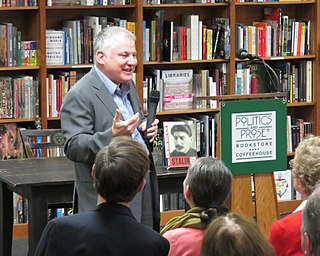
Stephen Mark Kotkin is an American historian, academic and author. He is currently the John P. Birkelund '52 Professor in History and International Affairs at Princeton University, where he is also Co-Director of the Program in History and the Practice of Diplomacy and the Director of the Princeton Institute for International and Regional Studies. He is also a Senior Fellow at the Hoover Institution at Stanford University. He has won a number of awards and fellowships, including the Guggenheim Fellowship, the American Council of Learned Societies and the National Endowment for the Humanities Fellowship.

David Raymond Miller is the North American director for the C40 Cities Climate Leadership Group, a former Mayor of Toronto and former president and CEO of WWF-Canada, the Canadian division of the international World Wildlife Fund.

The Northeast megalopolis is the most populous megalopolis located entirely in the United States, with over 50 million residents, as well as the most urbanized megalopolis in the United States and the megalopolis with the world's largest economic output. Located primarily on the Atlantic Ocean in the Northeastern United States, with its lower terminus in the upper Southeast, it runs primarily northeast to southwest from the northern suburbs of Boston, Massachusetts, to the southern suburbs of Washington, D.C., in Northern Virginia. It includes the major cities of Boston, Providence, Hartford, New York City, Philadelphia, Baltimore, and Washington, D.C., along with their metropolitan areas and suburbs. It is sometimes defined to include smaller urban agglomerations beyond this, such as Richmond and Norfolk, Virginia, to the south, Portland, Maine, to the north, and Harrisburg, Pennsylvania, to the west.
Joel Kotkin is a fellow in urban studies at Chapman University in Orange, California. He writes about demographic, social, and economic trends in the U.S. and internationally. He is a regular contributor to The Daily Beast and Forbes.com and is on the editorial board of the Orange County Register. Kotkin attended the University of California, Berkeley. A native of New York City, he now lives in Los Angeles.

Fences and Windows: Dispatches from the Front Lines of the Globalization Debate is a 2002 book by Canadian journalist Naomi Klein and editor Debra Ann Levy. The book is a collection of newspaper articles, mostly from The Globe and Mail, with a few magazine articles from The Nation and speech transcripts. The articles and speeches were all written by Klein in the 30 months after the publication of her first book, No Logo (1999), from December 1999 to March 2002. The articles focus upon the anti-globalization movement, including protest events and responses by law enforcement. The book was published in North America and the United Kingdom in October 2002.
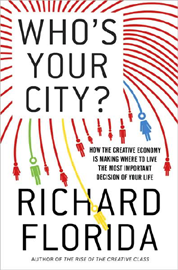
Who's Your City?: How the Creative Economy Is Making Where You Live the Most Important Decision of Your Life is a non-fiction book written by Richard Florida. The book advances Florida's previous work on the locational choices of people and businesses. He adds a dimension of environmental psychology by assigning psychological profiles to urban regions according to the dominant personality traits of the people who live there. For example, the New York metropolitan area and the ChiPitts area have the highest concentration in the United States of people whose dominant personality trait is neuroticism. The book ends with a ten step guide to choosing a location best suited to the reader's personality and life situation.
eHealth Ontario is the agency tasked with facilitating the development of Ontario's proposed public Electronic Health Record system. Health Informatics in Canada is run provincially, with different provinces creating different systems, albeit sometimes under voluntary Pan-Canadian guidelines published by the federal body Canada Health Infoway. eHealth Ontario was created in September 2008 out of a merger between the Ontario Ministry of Health's electronic health program and the Smart Systems for Health Agency (SSHA), with a mandate to create electronic health records for all patients in the province by 2015. It has been plagued by delays and its CEO was fired over a multimillion-dollar contracts scandal in 2009. Today eHealth employs approximately 700 people.
The Great Reset: How New Ways of Living and Working Drive Post-Crash Prosperity is a book published in April 2010 by Richard Florida, a professor at the University of Toronto's Rotman School of Management. The book puts into context Florida's urban development theories, with the financial crisis of 2007–2008, to describe the future of cities. The Great Reset looks at the economic incentives which have driven American society in the past. Florida compares the recession to two similar periods in recent history, the 1870s and the 1930s. The book is divided into three parts, how past resets have shaped development, how different cities are positioned, and what trends will emerge from the reset.

Reinier de Graaf is a Dutch architect, architectural theorist, urbanist and writer. He is a Partner of the Office for Metropolitan Architecture (OMA), founded by Rem Koolhaas, and author of the book Four Walls and a Roof: The Complex Nature of a Simple Profession.

An Army of Davids: How Markets and Technology Empower Ordinary People to Beat Big Media, Big Government, and Other Goliaths is a non-fiction book by Glenn Reynolds, a law professor at the University of Tennessee also known as the blogger 'Instapundit'. The book looks at modern American society through the lens of individuals versus social institutions, and Reynolds concludes that technological change has allowed more freedom of action for people in contrast to the 'big' establishment organizations that used to function as gatekeepers. Thus, he argues that the balance of power between individuals and institutions is "flatting out," which involves numerous decentralized networks rising up. Nelson Current, an arm of Thomas Nelson, Inc., published the book on March 7, 2006.
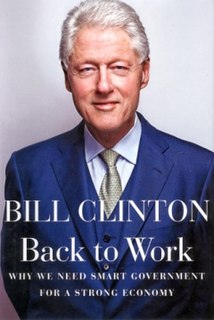
Back to Work: Why We Need Smart Government for a Strong Economy is a 2011 non-fiction book by former United States President Bill Clinton. Praise appeared in publications such as the Los Angeles Times and the New York Journal of Books, while publications such as The Guardian published more mixed reviews.















